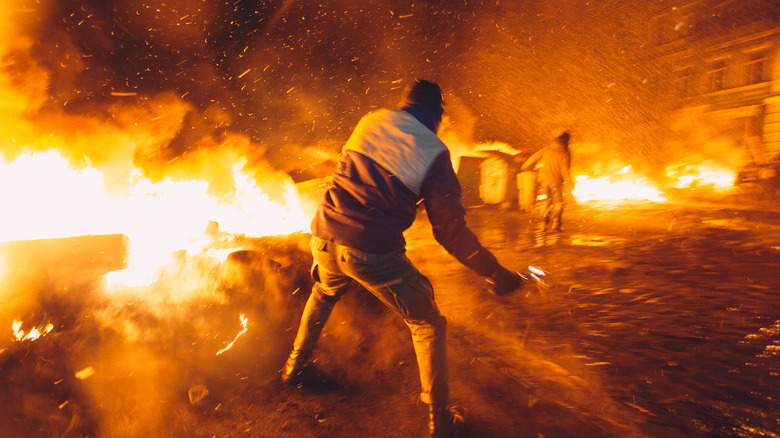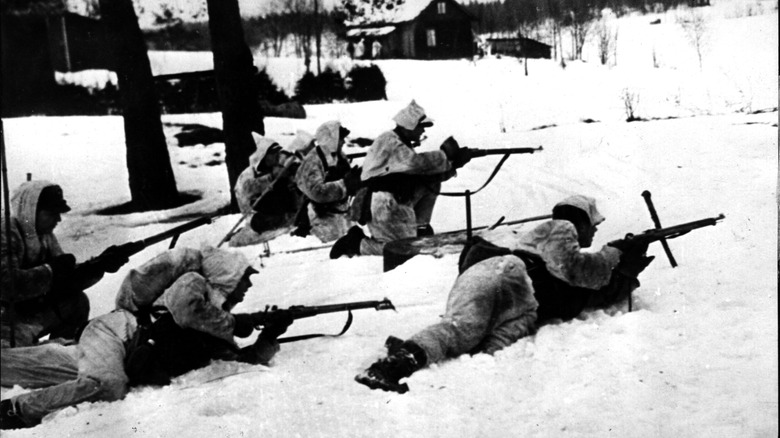Here's What We Know About The First Molotov Cocktails
Molotov cocktails are a common sight during protests or civil unrest around the world. They're simple to put together and they send a flaming message. They often cause property damage but they can also kill, and according to The Los Angeles Times, the Ukrainian government told citizens to "make Molotov cocktails and take down the occupier" during Russia's 2022 invasion of the country.
They're easily assembled by putting an accelerant — typically gasoline — in a glass bottle and then using something like a piece of cloth or a rag as a makeshift fuse. The bottle is thrown after the cloth is lit on fire, and once the glass shatters the accelerant ignites and causes a large fireball.
The simple homemade firebomb goes by a bunch of different names including bottle bomb, poor man's grenade, and gasoline bomb or petrol bomb, depending on which side of the Atlantic Ocean you happen to be on, but Molotov Cocktail is the most common (via iNews).
The first Molotov Cocktails
Incendiary devices have been around for a long time. Even the Greeks were using a mixture of chemicals known as Greek Fire, which they would even use in naval battles as far back as 1200 B.C., according to Stanford University. Molotov Cocktails first came about in 1939 during the Winter War between Finland and the Soviet Union.
According to Imperial War Museums, the war — which is sometimes called the Russo-Finnish War, took place after Finland declared neutrality at the start of World War II. The Soviet Union then faked a border incident and used it as an excuse to invade Finland.
At the start of the war, Helinski was invaded first, with Soviet foreign minister Vyacheslav Molotov saying that the Russians were supplying aid to the Finns. The Finns sarcastically referred to the bombs dropped on Helsinki as "Molotov's bread baskets" and soon they started adding "Molotov" to everything, per Huck. They started calling blackout curtains "Molotov curtains" and even referred to Russian bombers as "Molotov chickens." Following this convention, when the Finns realized the simple homemade firebombs they were using against the Soviets were effective, they gave them the nickname "Molotov cocktails."

